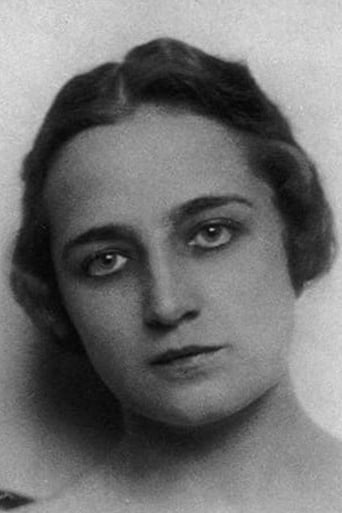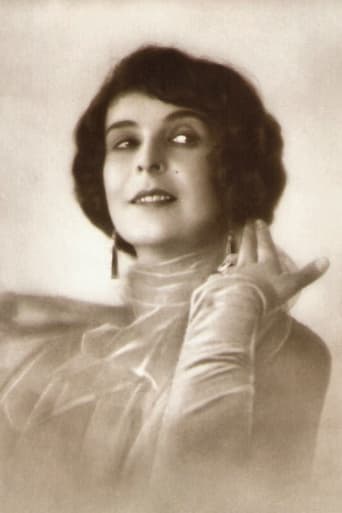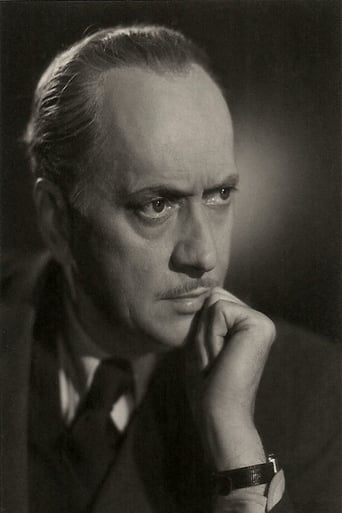VividSimon
Simply Perfect
Curapedi
I cannot think of one single thing that I would change about this film. The acting is incomparable, the directing deft, and the writing poignantly brilliant.
Tobias Burrows
It's easily one of the freshest, sharpest and most enjoyable films of this year.
Bob
This is one of the best movies I’ve seen in a very long time. You have to go and see this on the big screen.
MartinHafer
"Siegfried" is an amazing silent film to watch. There is a mystical quality about it--a luminous look that sets it apart from other films of the era. Artistically speaking, it might just be the most beautiful silent film I have ever seen--and I've seen a ton of silents. In addition, the sets are awesome, the costumes amazing (more on that later) and the film is just breathtaking. To make it even better, Criterion has included a brilliant score to accompany the film.Unfortunately, there is a 'but' to all this. While the film is just gorgeous, the movie is far from perfect and has one major problem and one minor one. The biggest one is that film crams the entire story of Siefriend into one film--and there is just way too much material. As a result, the film looks VERY episodic. Siegfried goes from one major event to another to another and it looks more like a highlights film than a coherent sage. Imagine if Peter Jackson had put all of the "Lord of the Rings" films into just one film--that is the experience I had watching "Siegfried". Although Fritz Lang was brilliant here, the script just tried to do too much. A MINOR problem, and this comes from a retired history teacher, is that the costumes are not authentic. Viking horns and eagle-winged helmets, unfortunately, never really existed--it's all myth promoted by the likes of Wagner and various 19th century illustrators. Now the helmets STILL are majorly cool--so I can't fault this over-idealized look too much.Overall, a mixed bag. It's worth seeing to say you've seen it but the film isn't perfect...but still packs a mighty punch.
Petri Pelkonen
Siegfried is our hero of this medieval saga.In the beginning of the tale he masters the art of forging a sword at the shop of Mime.When he's heading home he hears tales of Kriemhild, the princess of Burgundy.On his way to Burgundy Siegfried slays the dragon Fafnir, and bathes in his blood.This makes him invulnerable to attack.There is one spot, though, on his shoulder blade that was covered by a falling leaf.He also encounters and defeats Alberich, King of the Dwarfs, and obtains an invisibility cap.He finds the treasure of the dwarfs and arrives in Burgundy.Siegfried wins the love of princess Kriemhild.But he can not marry her until he has helped her brother, King Gunther to marry Queen Brunhild.And so it happens.Now Siegfried is ready to wed Kriemhild.But Brunhild learns about Siegfried's role in the marriage plot, so she wants him dead.She makes up lies about him to the King and Gunther's uncle, Hagen von Tronje.He finds Siegfried's weak spot and pierces it with a spear.Brunhilde kills herself after confessing her lies.The master German director Fritz Lang is the director of Die Nibelungen: Siegfried (1924) and its sequel.He wrote it with his then-wife Thea von Harbou.It's based upon the epic poem Nibelungenlied written around AD 1200.This movie from 85 years back offers some good adventure fantasy.The fight against the dragon is the most memorable sequence.The dragon looks surprisingly realistic.The performances are all good.Paul Richter plays Siegfried and Margarete Schoen is Kriemhild.Hanna Ralph portrays Brunhild.Hagen is played by Hans Adalbert von Schlettow.Theodor Loos plays King Gunther.Georg John is Mime, der Schmied/Alberich, der Nibelung.This is definitely worth viewing.And the saga goes on in Kriemhild's Revenge.
Steffi_P
UFA's Die Nibelungen films have suffered from a problem common to Metropolis, King Kong and Snow White and the Seven Dwarfs, in that they are motion picture classics that also happen to have been favourites with Adolf Hitler. While those others I mentioned tend to be overlooked as coincidences – evidence of nothing more than that sometimes even fascist dictators have taste – the Nibelungen pictures have fared a little worse because of the significance of the legend to German nationalism, as typified in the opera by the German anti-Semite Wagner.However, while the Nazis may have been able to project their racial ideology onto the original story, Fritz Lang's direction of the motion picture version actually breaks with the heroic nationalist reinterpretation. Wagner's opera was calculated to be exciting and rousing. Screenwriter Thea von Harbou would eventually become a nazi stooge, and probably intended a similar effect for the film. The original poem Nibelungenlied though is not intrinsically nationalistic – it is simply a folk tale in a similar vein the King Arthur legend or the Iliad, and Lang recognised this fact. Like those ancient sagas from which it is drawn, his version is lacking in any kind of emotional manipulation, yet is rich in pageantry and poetic imagery. In Die Nibelungen we in fact have a perfect example of how a director's formal technique can shape the tone of a film.Throughout the picture, Lang takes a cool, detached approach to the material. There are few close-ups or point-of-view shots. We know that Lang was not averse to these techniques – look at his previous picture, Dr Mabuse, where the title character is often staring straight into the lens, as if to hypnotise the audience. Let's also compare the dragon slaying scenes from Die Nibelungen and the Douglas Fairbanks Thief of Bagdad (directed by Raoul Walsh). The important difference here is not who had the best dragon (and to be fair they are both pretty naff), but how they are filmed. For the Fairbanks legend to work, you have to get swept up in the action, and Walsh places the camera at the hero's back as he delivers the fatal blow, bringing the audience in for the kill too. Siegfried's fight is staged almost identically yet Lang just matter-of-factly shows it happen, even giving us the dragon's death indirectly with a shot of its tail flopping to the ground.All this is not to say that Lang did not have respect for the Nibelungen story. He had great reverence for it, but again purely in the form of an old legend – an artefact of a bygone era, not something that a modern audience can or should try to relate to, but something profound and beautiful nonetheless. Lang reflects this in the overall look of the picture, forming neat, painterly tableau, encouraging exaggerated, theatrical acting and giving the overall picture a stylised sense of rhythm. Ironically he brings it close to opera in tone, although of course this version was in no other way like Wagner's.Lang's distinctive visual style pervades Die Nibelungen. So far, Lang had made striking use of interiors, but Siegfried's story mostly takes place outdoors. There are no rolling vistas here though. Lang creates a claustrophobic landscape out of crowding forests and overbearing rock formations. In earlier Lang films we can already see how his sets and shot compositions seem to form patterns and paths to hem in the characters and even control their movements, but now the actors almost seem to become part of the scenery. Take for example a shot about two-thirds of the way through, when Brunhild is framed between two curtains – the pattern on her dress matches that on the curtains. Throughout his career Lang first and foremost shoots the sets – the actors are merely a part of them.This thoroughly Langian interpretation of the Nibelungenlied may have brought a tear to the eye of Hitler and Goebbels, but the emotional connection to the material can only have existed in their heads. To the majority of viewers, this picture and its sequel do not encourage any kind of romantic or heroic feeling. They are in a way more of an illustration than a story in their own right. While this detached style does not make for gripping viewing, the films do have an aesthetic beauty to them that makes them watchable.
riddion
When I saw this wonderfully exciting adventure film, it got me thinking, "Why can't people make films like this anymore?". Partly why the film makers don't make films like this anymore is that they are so occupied in having the best special effects around and don't give a hoot about the characters, story or detail (Jurassic Park, Lost World, Independence Day, Armageddon are only a small part). I would love to go and see a film that have real characters from these make-believe worlds. There are so many movies today that have Americans in a make-believe world, acting and talking like Americans, this makes me sick all over. This movie has real characters we care about in a believable world. This is partly why I love silent films so much. It is the acting and not the dialog that the viewer gets to know the character through.This film has all the elements that makes up for a good adventure film. Very good story, exciting action, wonderful sets, beautiful photography, chillingly wonderful villains and some of the best special effects I've seen (for the time's standard). I especially love the trick photography to make Siegfried invisible and casting a shadow even though he is. I'm looking forward to watching Kriemhild's Revenge.If you haven't seen this movie and love adventure movies, see it. It is so exciting and magical that you'll remember it always when you see a bad adventure movie, something that is normal today.



